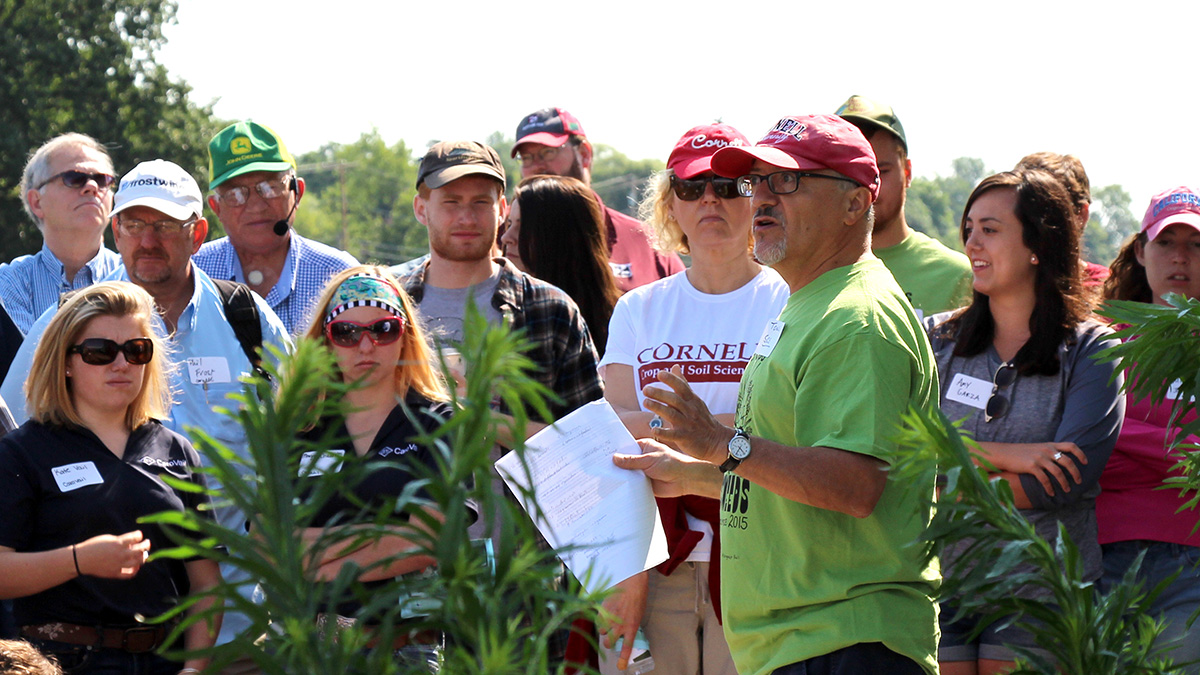Pest control: Wicked weeds may be agricultural angels
By Blaine Friedlander

Farmers looking to reduce reliance on pesticides, herbicides and other pest management tools may want to heed the advice of Cornell agricultural scientists: Let nature be nature – to a degree.
“Managing crop pests without fully understanding the impacts of tactics – related to resistance and nontarget plants or insects – costs producers money,” said Antonio DiTommaso, professor of soil and crop science and lead author of a new study, “Integrating Insect, Resistance and Floral Resource Management in Weed Control Decision-Making,” in the journal Weed Science (October-December 2016).
“We are taking a renewed look at a holistic, sustainable integrated pest management (IPM) approach,” DiTommaso said.
In corn production, for example, maintaining a few villainous milkweed plants in the middle of a cornfield may help minimize crop loss from the destructive European corn borer. The milkweed plants can harbor aphids (destructive sap-sucking flies) that produce a nectar food source for beneficial parasitic wasps Trichogramma. The wasps, in turn, lay eggs inside the eggs of the European corn borer, killing the corn borer eggs – reducing damage to the crop.
“Production management rarely considers the benefits of weeds in agricultural ecosystems,” said DiTommaso. “Let’s look at the big picture. If we open our eyes – even if it’s a weed growing in the cornfield – we show it could be beneficial. Integrating weed benefits will become increasingly important, as pest management is likely to move from total reliance on herbicides and transgenic crop traits for control, because of increasing resistance of weeds to these products.”
One additional side benefit for having a few milkweed plants in a field of corn is that it serves as a breeding place and food source for monarch butterflies. As of late, monarch numbers are down, and the U.S. Fish and Wildlife Service is evaluating a petition to have them protected under the Endangered Species Act.
While some growers elect not to use engineered crops, producers may see a return to IPM methods from two decades ago, as resistance could easily occur when relying on a single tactic.
With increasing no-till production, producers will inevitably see rebounds in perennial weeds – such as milkweed, the researchers said. Thus, some growers may be willing to tolerate a low milkweed population in favor of providing livable plant space for monarchs.
“Every organism in an agricultural system plays multiple roles,” said John Losey, professor of entomology. “If management decisions are based solely on the negative aspects, yield and profit can be lost in the short term and broader problems can arise in the longer term.”
Integration of the weed costs and advantages will become important. “The benefits of weeds have been neglected. They’re often seen as undesirable, unwanted. We’re now beginning to quantify their benefits,” said Kristine M. Averill ’05, M.S. ’09, weed research associate.
“It’s very important to recognize the benefits of all the species within the crop field – that includes both the crops and the weeds – not to mention cover crops. Weeds can offer ecosystem services, such as soil erosion protection and pollination services for the benefit of insects,” Averill said. “They can be part of a restorative cycle.”
Joining DiTommaso, Averill and Losey on the study were Michael Hoffmann, professor of entomology; and Jeffrey R. Fuchsberg, director of intellectual property at the Medical Center of the Americas Foundation.
Media Contact
Get Cornell news delivered right to your inbox.
Subscribe